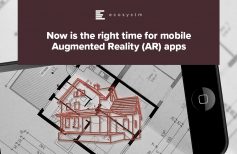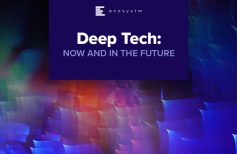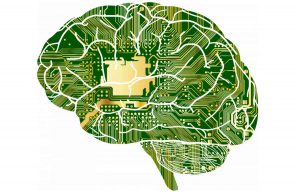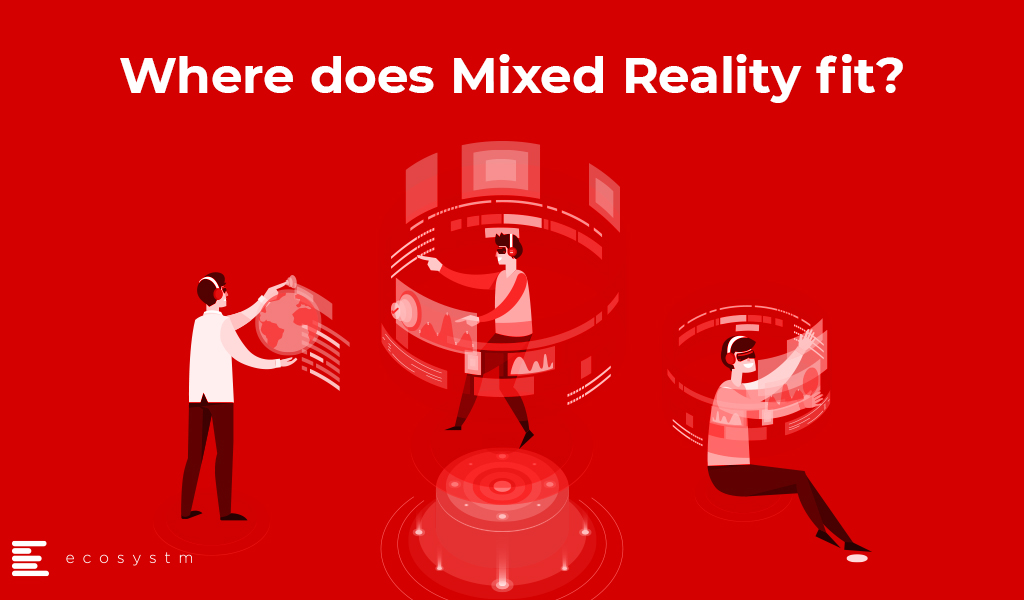
We’ve been hearing about Augmented Reality and Virtual Reality for a while now. The future of the virtual world is being built today and as AR/ VR become more mainstream and prices decrease, there’s a new technology trying to fit in somewhere, to perform its magic – Mixed Reality.
What is Mixed Reality, however? Is it just another marketing jargon for the same technology wrapped in new covers?
Before diving deep into mixed reality , let us revisit the fundamentals of the virtual world technologies.
Virtual Reality
Virtual Reality replaces your world with a digital world and has been in the market from some time. VR is achieved through the use of a virtual headset which in combination with an image/video (either through phone or direct source connection) produces multi-projected environments with lenses to generate a virtual environment. It provides real-world experience and some of the use cases include driving and flight simulators, virtual tours, 360° videos, and in healthcare, training and more. There are a variety of VR devices available today from known manufacturers such as Facebook ‘s Oculus, Samsung Gear, Google Cardboard, Sony’s PlayStation VR, HTC Vive and others, offering different features, and addressing different requirements and comfort.
Augmented Reality
Augmented Reality is a direct or indirect view of physical world elements augmented through the digital environment. Basically, AR supplements the real world with digital objects of any sort. It is already being used in the Aviation industry, where data is displayed within the pilots’ helmet view as they fly.
An example of AR is Ikea’s mobile app developed specifically to showcase its furniture catalogue – A piece of furniture such as a dining table or a television cabinet can be virtually displayed as a digital image overlaid on top of the real image of your home space. This lets you easily judge the appearance or gauge how it will fit in your home space.
Some of the more well-know AR devices include Google Glass, Microsoft HoloLens, and Sony Leap. AR is also used in mobile gaming applications such as Pokemon GO, where virtual creatures are placed into the real world.
Where does Mixed Reality fit?
As an independent notion, Mixed Reality combines the best of both worlds and covers all the possible disparities of the physical and the simulated worlds.
Also known as hybrid reality, Mixed Reality covers the spectrum where physical and digital objects co-exist and interact in real time. Somewhere, between AR and VR, there is an overlap between the physical and the virtual worlds – that is where Mixed Reality comes in.
Both AR and VR require users to step out of their own reality – or to use another device (typically a smartphone) to access digital or “virtual” content. The experience is either all-encompassing (with VR – where the content overrides your current reality), or underwhelming (with AR – where the content is limited, does not understand your current reality and/or is at arm’s length on a relatively small screen).
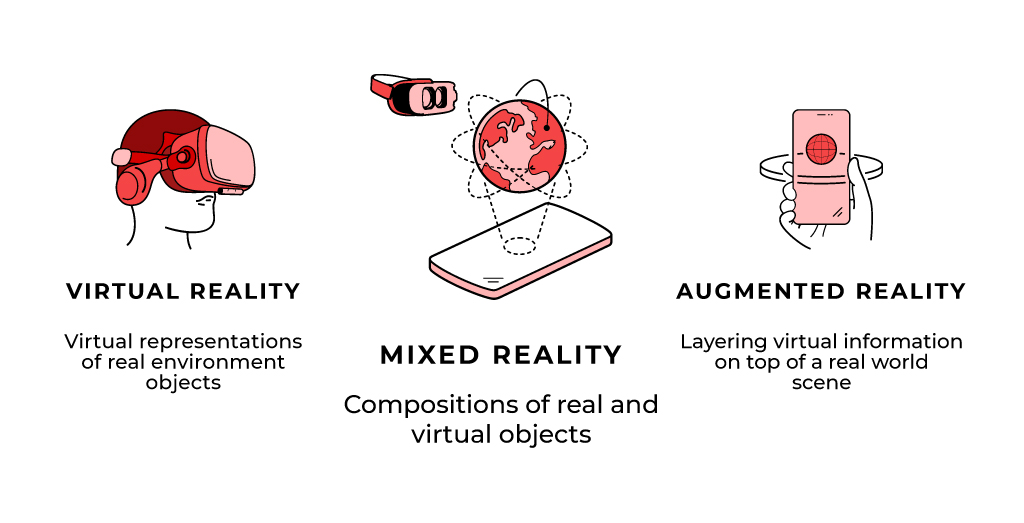
Mixed Reality is designed to add digital assets to your current environment. It adds to the current environment in a natural way that gives the user benefits that non-users would not have.
For businesses, Mixed Reality can offer the most benefit and potentially offer limitless opportunities. Defining the polar ends of AR and VR spectrum Microsoft introduced Hololens in late 2016 as a groundbreaking device and showcased capabilities blending the real and virtual world. Despite being a promising product, there have been hiccups such as a limited field of view (FOV) restricted to only 30°, scaling and sizing holograms and others.
Learning from the failures, Microsoft recently released a new version of its Mixed Reality device – the Hololens2. Microsoft’s Hololens2 takes Mixed Reality beyond niche use cases using more natural gestures, a larger FOV and a multi-user environment – powered by Azure Mixed Reality services.
Mixed Reality in the Enterprise
The use cases of Mixed Reality are many and as the continuum builds, the testing, adoption and deployment cases will become wider. Microsoft’s device is not aimed for the consumer market and is primarily targeted towards business use cases.
Tim Sheedy, Principal Advisor, Ecosystm, believes, “Most of the short and medium-term use cases are really suited to businesses. There are definitely some longer-term opportunities for consumers, but that will require substantial miniaturisation of the hardware and change of form factor. Current MR systems won’t become mainstream devices in the consumer market.”
With Mixed Reality in the play, organisations will be able to explore newer ways of doing things:
Training. Training is a perfect use case. If you can imagine taking a typical guided software where tips pop up on a screen (such as “click this button to personalise your experience, click here to see current leads, click here to add an opportunity) and move this training to the real world (this lever shuts down the machine, this valve reduces pressure etc) then you can get an idea of what is possible.
Engineering. This applies to any job that requires engineers or repairers to work on equipment, where they can be guided through a fix. Any sensor that sends information back to a computer can now be visualised – a mechanic may look at a car and see green for all the components operating within standard range and red for those that need attention or repair.
Construction. A construction worker or site manager can see the entire building or components of the building in advance and make plans for the location of materials, staff, safety etc.
Graphics Designing. A designer can picture how a new product might look in an environment and can design the product with respect to the actual surroundings.
Healthcare. A surgeon could have a CT or MRI scan overlaid onto the patient as they operate to ensure they are targeting the right area.
Anywhere that digital assets or information can assist a worker or drive a more effective, faster or safer outcome are all potential use cases for Mixed Reality services.
A Look at the Field
The theory behind Mixed Reality is that it adds to the user experience in a natural way. Organisations are exploring opportunities to leverage these technologies in the real world. Despite numerous use cases and de facto descriptors, the technology cannot be manifested until it comes to real use.
“Mixed Reality will be a success when it is seamless to use for the first line workers – when it doesn’t feel like a computer you wear on your head!” says Sheedy. “You should be able to interact with these assets in a standard way – and this is where Hololens2 is a big step above the first iteration – as it will allow more natural interactions with the digital objects – you push something or turn something and it moves, versus the “finger click” approach of the first version.”
Imagine your first day at work at a new employer, and instead of a person showing up to give you the tour, you put on a Mixed Reality device (standard or industrialised for those in mining, construction etc) and you are given a tour with virtual overlay and audio guidance.
Sheedy believes that “Mixed Reality may never be a mainstream technology – well not in our generation at least. But that doesn’t mean it won’t be a commercial success. If it is easy to deploy, manage, use, and code for and makes financial sense for businesses to deploy them then these devices will be used. The previous Hololens had commercial users – but Hololens2 should see more success as it is a better solution that can help businesses overcome even more challenges.”
The longer-term success of Mixed Reality will be how well it works with existing software platforms out-of-the-box. Support by SAP, Oracle, Salesforce, IBM and others will help to drive adoption.
How is it going to evolve in the future?
At present, the mobile device is the interface of choice for consumers and workers. But voice is quickly taking off (e.g. Google Home ). Mixed Reality adds an extra impetus to devices that are looking to supplant the smartphone as the interface to information, entertainment and data.
The longer-term future will likely see the emergence of standards that deliver the right information at the right time on the device of choice – whether that device be one with a screen, a microphone and a speaker (smart speaker like the Amazon Alexa), a screen and a speaker (such as a Hololens device), a smartwatch or another form factor.
“Mixed Reality devices will get smaller, smarter, faster, have better resolution, be more integrated (with cloud services and software platforms) and more integrated with another non-screen interface” says Sheedy.
“Access to the right information at the right time on the best device that drives the right outcomes will be the ultimate goal – and Mixed Reality will be one of the form factors that help consumers and businesses achieve that goal.”
It’s still too early to tell the direction this technology will take but the promises surely appear to be overwhelming. What do you think will be the future of Mixed Reality – is it another gimmick or will it really live up to its promise?
Let us know in your comments below.


